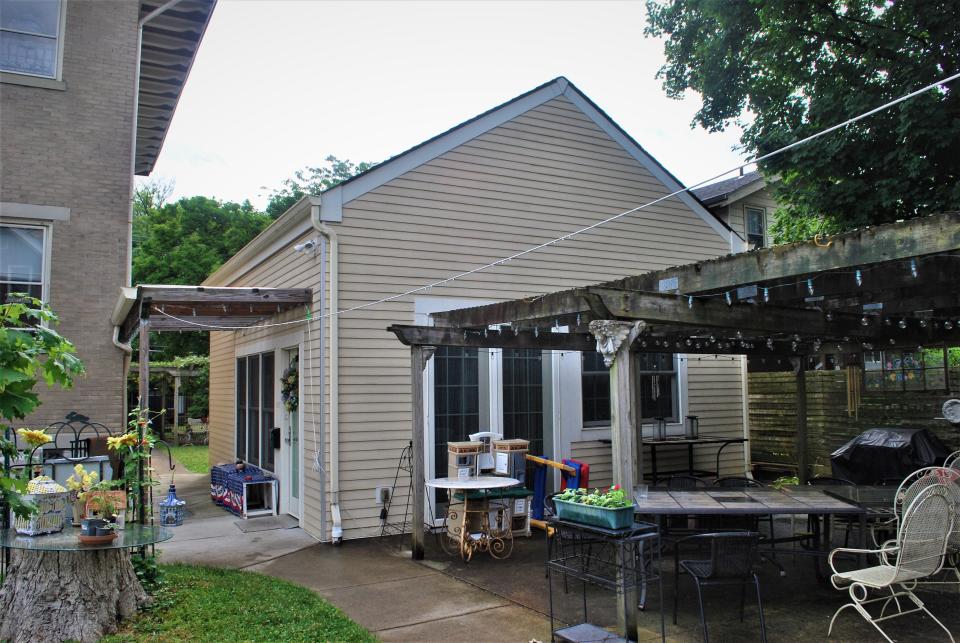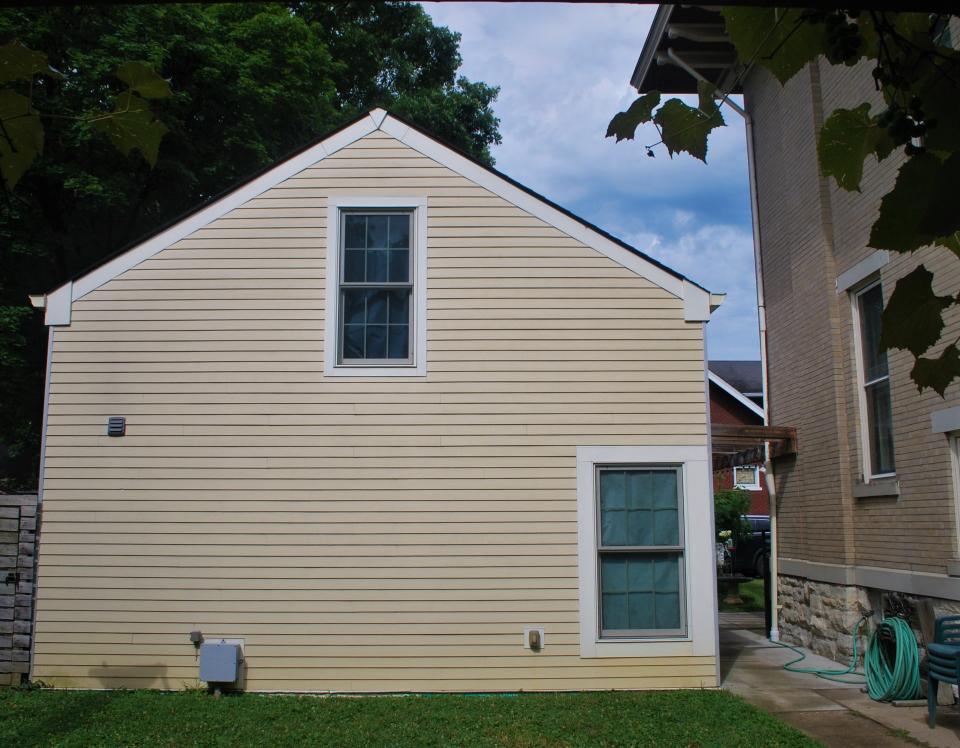Cincinnati legalized accessory dwelling units last year. How popular are they now?
Cincinnati became the first city in Ohio to legalize accessory dwelling units when city council passed an ordinance in June of last year, going into effect in October.
Months after becoming an option for homeowners to add a separate dwelling place on their property, people have lagged to build them, city records show. But Mark Jeffreys, the Cincinnati city council member who spearheaded the legislation, is still convinced that accessory dwelling units can be a boon for some homeowners as awareness grows.
“It’s not a panacea. It’s not going to solve all housing issues, but it’s a way for people to build more housing,” Jeffreys said.
Sandy Hamilton, a 76-year-old Northside resident, experienced that advantage years before any other Cincinnatian could.
Hamilton’s property comprises two lots, so she was able to build a secondary living structure long before the ordinance was implemented.
According to Hamilton County property records, she was approved to build a detached “mother-in-law living area” in 2015.
Before building that structure, Hamilton’s mother lived a few doors down from her. As she aged, she started struggling with the stairs at her home but refused to go to a retirement living facility, Hamilton recalled.
“When her friends would take her to the opera and they’d get home around 10:30 to 11 o’clock at night, I’d have to go down and help her – minimally – get into the house,” she said.
Adding the extra living space allowed Hamilton to build a structure that accommodated her mother’s needs, which she says made her life easier.

What’s an accessory dwelling unit?
Accessory dwelling units are secondary living quarters developed on land that's zoned for a single-family residence.
They can take a few different forms: an attached annexation to a home, a converted basement, attic or garage, or an entirely separate structure on the land. They must have their own entrance and be furnished with the trappings of a livable home, like a kitchen, bathroom and sleeping area.
Jeffreys says the benefits of accessory dwelling units are three-pronged.
First, they provide another avenue for addressing the housing shortage by adding units to the housing stock, Jeffreys said. A 2022 study by the National Low Income Housing Coalition found that Cincinnati needs to add 49,510 rental units that are affordable to extremely low-income families to meet demand.
Second, they support an increasingly popular desire for older adults to “age in place,” he said. Accessory dwelling units may be an apt living configuration for older parents to live near their adult children with both sides still having the privacy of a distinct living space.
Lastly, it’s a way for homeowners to build wealth from their homes, Jeffreys said. Homeowners can lease their accessory dwelling units as short or long-term rentals.
How common are accessory dwelling units in Cincinnati?
Cincinnatians have been slow to build accessory dwelling units since the passage of the ordinance last year, but Jeffreys doesn’t anticipate it staying that way forever.
The city has received four permit applications to build accessory dwelling units since the ordinance passed, according to city planning.
As more people become aware of accessory dwelling units and learn the permitting process, Jeffreys thinks their popularity in the city will increase.
“It’s not something that overnight will create more housing, but over years, it’ll create incremental housing units,” the council member said.
Portland, Oregon, where accessory dwelling units have been legalized since 1981, showed a similar trend. In 2010, when the city lightened regulatory policies governing the housing format, the number of licenses the city doled out shot from 86 in 2010 to 615 in 2016, according to an Urban Land Institute report.
What are the drawbacks of accessory dwelling units?
When the ordinance was in the planning and discussion stages, some residents were concerned about the possibility of more short-term rentals popping up in neighborhoods, Jeffreys said. Specifically, they worried that renting them out to partiers could disturb the peace and have “detrimental” effects on the neighborhood, he said.
Others worried that out-of-town landlords would exploit the ordinance as a profit-boosting tool by buying up properties and building accessory dwelling units to have another unit to rent out, the councilmember said.
The ordinance combats this by mandating the land owner or a “responsible person” who is designated by the owner to live in one of the dwellings and manage the lot, Jeffreys explained.
This policy is enforced with a written agreement between the owner and the city and an annual registration requirement. Running afoul of the agreement is punishable with a fine.
But Julie Rimer, who serves as the secretary of the Mount Washington Community Council, differs with Jeffreys framing the provision as a safeguard to keep out-of-town landlords from building accessory dwelling units for more profits.
The provision says the responsible person must “maintain a residence” in either the principal or accessory structure and is charged with independently operating, maintaining and managing the lot, which includes financial responsibility.
“Residence” is defined as a “permanent” and “indefinite” home that is the person’s only one within the city.
Those stipulations are too vague to be rightfully enforced and leave loopholes for developers to take advantage of accessory dwelling units, Rimer said. She would have liked to see a minimum length of lease requirement and clearer language to describe the “responsible person” included in the ordinance, she said.
Jeffreys says the "responsible party" language was hashed out with a court ruling out of New Orleans in mind. In that case, the United States Court of Appeals for the Fifth Circuit struck down a New Orleans law that required the owner of a property to occupy it to qualify for a short-term rental license.
Cincinnati opted for less restrictive language when crafting the "Occupancy by Owner or a Responsible Person" section of the ordinance to avoid similar litigation, Jefferys said.

Architecture for aging in place
Hamilton designed her Northside accessory dwelling unit with the needs of her aging mother in mind.
The design concept is open so her mother could easily get to the kitchen or bathroom in a moment of confusion, Hamilton said. The bathroom employs a "wet room" concept, with the showerhead draining straight onto the floor rather than having an enclosed shower.
The entrance ways are also aging-friendly. The main door is wide for wheelchair and scooter accessibility. Double-patio doors were incorporated in case medics ever had to transport Hamilton's mother out of the unit.
Hamilton’s mother died about two years ago. Now, Hamilton uses it to house her daughters when they visit from out of town and to host company occasionally, she said.
“The more people know about it, the more it is an answer to some situations,” she said. "It seemed like a full-circle, natural thing for her to not have to be placed (in a retirement home)."
This article originally appeared on Cincinnati Enquirer: Impact of accessory dwelling units since Cincinnati legalized them

